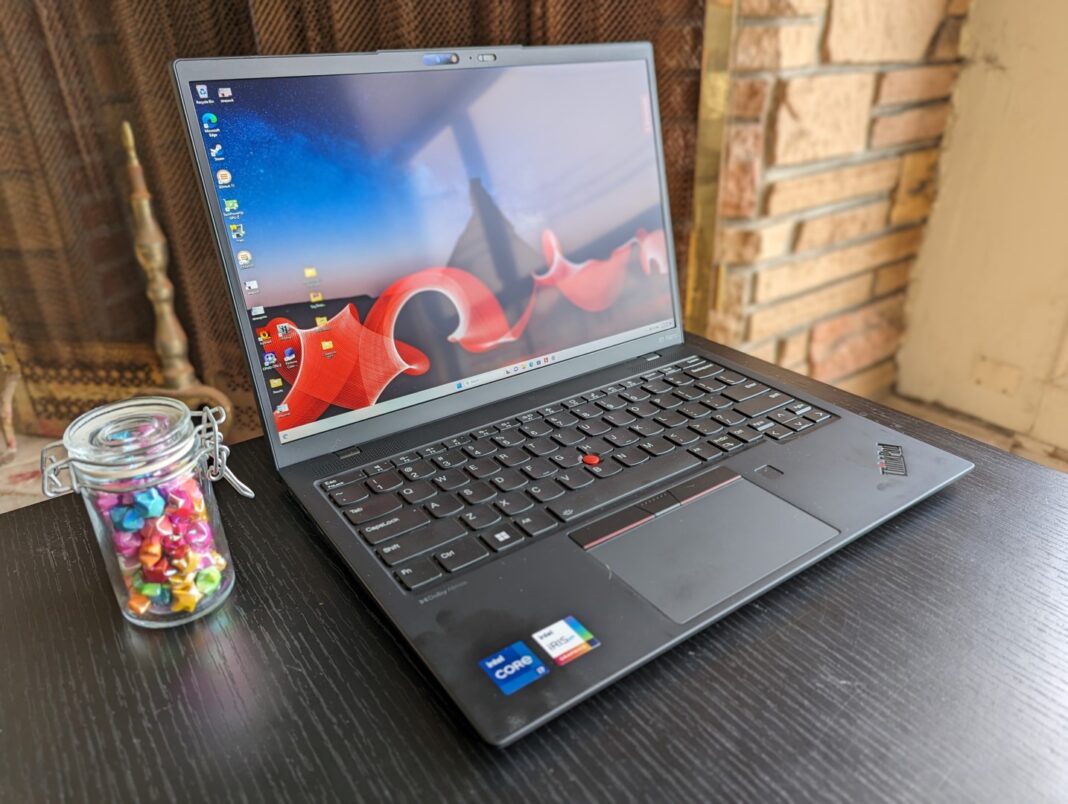The ThinkPad X1 Nano Gen 3 succeeds last year’s ThinkPad X1 Nano Gen 2 by replacing the 12th gen Alder Lake CPUs with newer 13th gen Raptor Lake options. Other than the CPU swap, the super-light chassis remains identical and so our existing comments on the ports and other physical aspects of the X1 Nano Gen 2 still apply here on the X1 Nano Gen 3. This page will instead focus on the performance differences between the two models as well as any other notable changes.
Our test unit has been configured with the Core i7-1360P for approximately $1400 USD retail. Other SKUs include the Core i5-1340P with vPro and non-vPro options up to the i7-1370P, but all configurations at the moment include the same 16 GB of soldered RAM and 13-inch 2K (2160 x 1350) IPS display with optional touch. Alternatives to the ThinkPad X1 Nano Gen 3 include other ultralight subnotebooks like the LG Gram 13 , Dynabook Portege X30L , Dell Latitude 9330 , or HP Dragonfly G4 .
More Lenovo reviews: While there are no major exterior changes from the previous year, keep in mind that the touchscreen version is slightly larger than the non-touch version. The extra thickness and weight are hardly noticeable in practice. Interestingly, the IPS panel on this year’s model is different than the panel on last year’s model (MND007ZA1-3 vs.
P101ZFZ-BH2). Other than the name change, however, both displays share similar color ranges, response times, brightness levels, and contrast ratios for a similar viewing experience. The display is better calibrated out-of-the-box for improved color accuracy over last year’s model.
Average grayscale and color deltaE values would be just 1. 8 and 1. 79, respectively, compared to 5.
7 and 4. 85 on the X1 Nano Gen 2. This means that an end-user calibration is not as necessary this time around.
We set Windows to Performance mode prior to running the benchmarks below. On most other Lenovo laptops, the Vantage software would have special power settings in addition to the usual Windows power settings. On the ThinkPad X1 Nano, however, Vantage would have no special power settings to reduce confusion.
Our 13th gen Core i7-1360P would perform almost identically to the 12th gen Core i7-1280P on last year’s model. It would sometimes even fall behind the older processor due to steeper throttling as shown by our CineBench R15 xT loop results below. Nonetheless, it’s still faster relative to competing subnotebooks powered by Core U-series CPUs like the HP Dragonfly G4 or Dell Latitude 9330 by up to 20 percent.
PCMark scores are slightly ahead of last year’s model despite the throttle-prone CPU and integrated GPU. This may be attributed to the SSD in our 2023 model which is faster than the one that shipped on the 2022 model as demonstrated in our Storage Devices section below. LatencyMon reveals minor DPC issues when opening multiple browser tabs of our homepage.
4K video playback at 60 FPS is otherwise smooth and with no dropped frames recorded. Lenovo has changed the SSD from the 1 TB Kioxia KBG5AZNT1T02 on last year’s model to the 1 TB Kioxia KXG80ZNV1T02 on our 2023 model. The new drive can reach up to 4000 MB/s compared to 3000 MB/s on the older drive, but performance eventually throttles after a minute or so of heavy use.
3DMark Fire Strike and Time Spy results are roughly 25 percent slower than on last year’s model even though both models come with the same integrated Iris Xe 96 EUs GPU. The discrepancy can be attributed to an increase in throttling behavior on our Gen 3 unit. Interestingly, 3DMark 11 scores are more similar year-over-year.
This may suggest that there is a short period of stable GPU performance on the Gen 3 model when at a cooler state before throttling inevitably kicks in. It’s unfortunate that Lenovo doesn’t offer any AMD options for its X1 Nano series as the latest Radeon 680M or 780M integrated GPUs are significantly ahead of the aging Iris Xe series. Frame rates when idling on Witcher 3 would cycle between 62 and 88 FPS whereas frame rates on last year’s ThinkPad X1 Nano Gen 2 would be much more stable as shown by the graph below.
The unstable frame rates aren’t a huge issue since the ThinkPad X1 Nano series isn’t designed for gaming and users can still stream games smoothly via cloud, but steady GPU performance is always preferable. Fan noise is silent when at a cool state, but it typically hovers around 25. 6 dB(A) in realistic browsing or video streaming scenarios which is still essentially inaudible in office space or classroom environments.
Interestingly, the newer model is quieter than the older one when running higher loads (37 dB(A) vs. 41 dB(A)) which correlates with the slower performance mentioned above. Surface temperatures are warmer than on most other subnotebooks since the cooling solution for the ThinkPad X1 Nano is so small.
The keyboard and bottom surface can be as warm as 38 to 43 C which is several degrees warmer than on the HP Dragonfly G4 when under similar heavy loads. When running Prime95 to stress the CPU, clock rates and board power draw would spike to 3. 1 GHz and 64 W, respectively, lasting for only a few seconds due to the 100 C core temperature.
The CPU would then stabilize at 1. 5 GHz and 23 W in order to maintain a more manageable core temperature of 90 C. Lenovo is definitely pushing the limits of the Core-P CPU given the limited cooling potential of the model.
These very high core temperatures are warmer than on the Dragonfly G4 and comparable to the Latitude 9330 under similar conditions. Our Gen 3 model is noticeably more power efficient than the older Gen 2 model as shown by the table below. These savings are likely responsible for the overall longer battery life.
The power savings extend into higher loads like games where our unit would demand 25 percent less energy than the year before. These results align with the aforementioned 25 percent slower graphics performance and throttling behavior of our system. Battery capacity is small at under 50 Wh in order to maintain the very low weight.
Nonetheless, battery life is still very good at almost 8 hours of real-world WLAN browsing which is an improvement over last year’s model by a couple of hours. Charging from empty to full capacity takes about 90 minutes with the included AC adapter. The 2023 ThinkPad X1 Nano carries a few improvements over the 2022 version.
Fan noise, battery life, and SSD performance have all been improved which should benefit users who are constantly on the move and away from a power source. Keep in mind that any year-over-year performance improvements are marginal at best despite the update to the newer 13th gen Intel platform. This isn’t to say that the Lenovo is slow as its Core P-series CPU is ahead of the more common Core U-series as found on most other subnotebooks, but the delta isn’t as wide as one might expect due to the limited cooling capabilities of the ThinkPad X1 Nano design.
After all, concessions are inevitable when aiming for a sub-kilogram final weight. The Core P CPU here is therefore at its best for short bursts of Turbo Boost performance such as when launching applications or editing photos. The ThinkPad X1 Nano Gen 3 is one of the only 13-inch laptops under 1 kg to ship with Core P CPUs.
Performance is excellent for short bursts before heat and throttling kick in. If you’re trying to save some dough, then you can get essentially the same user experience by opting for the older ThinkPad X1 Nano Gen 2 especially since Lenovo has made no changes to the display or other physical aspects of the model. Lenovo is now shipping its ThinkPad X1 Nano Gen 3 starting at $1270 USD for the base Core i5-1340P configuration up to $2000 for the highest-end Core i7-1370P configuration.
.
From: notebookcheck
URL: https://www.notebookcheck.net/Lenovo-ThinkPad-X1-Nano-Gen-3-laptop-review-Intel-Core-P-at-under-1-kg.742244.0.html



